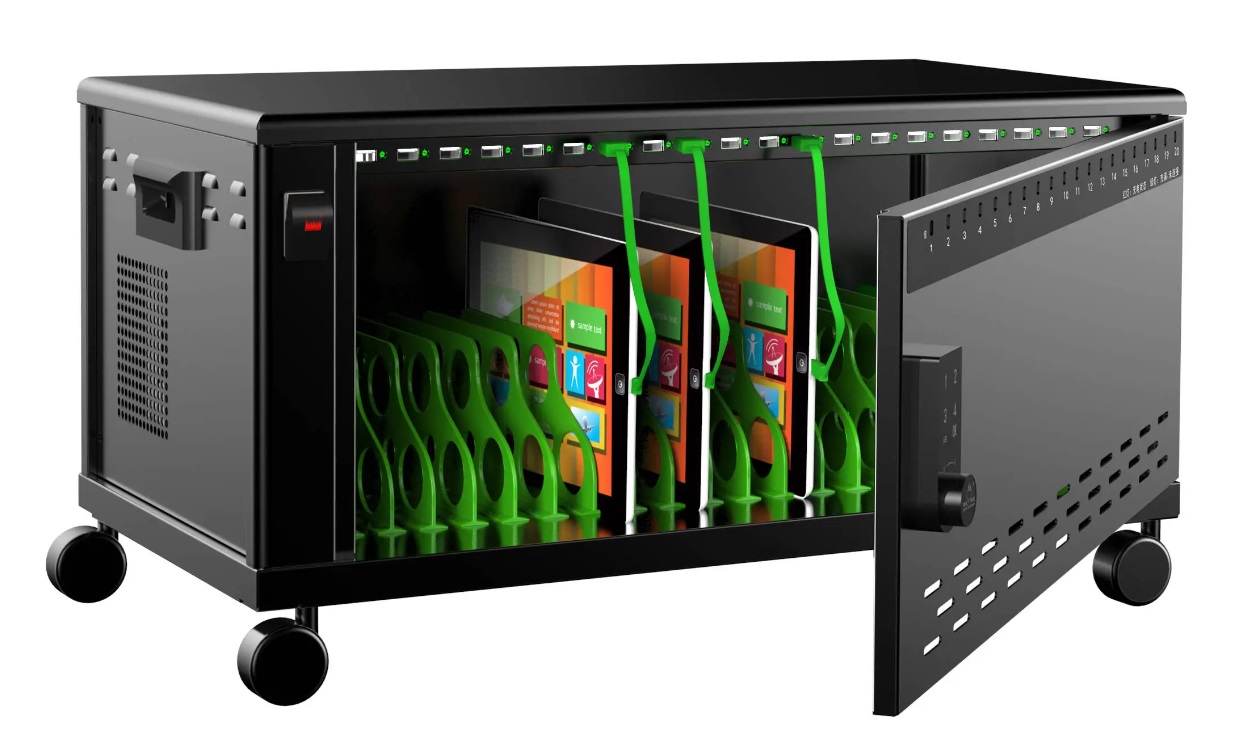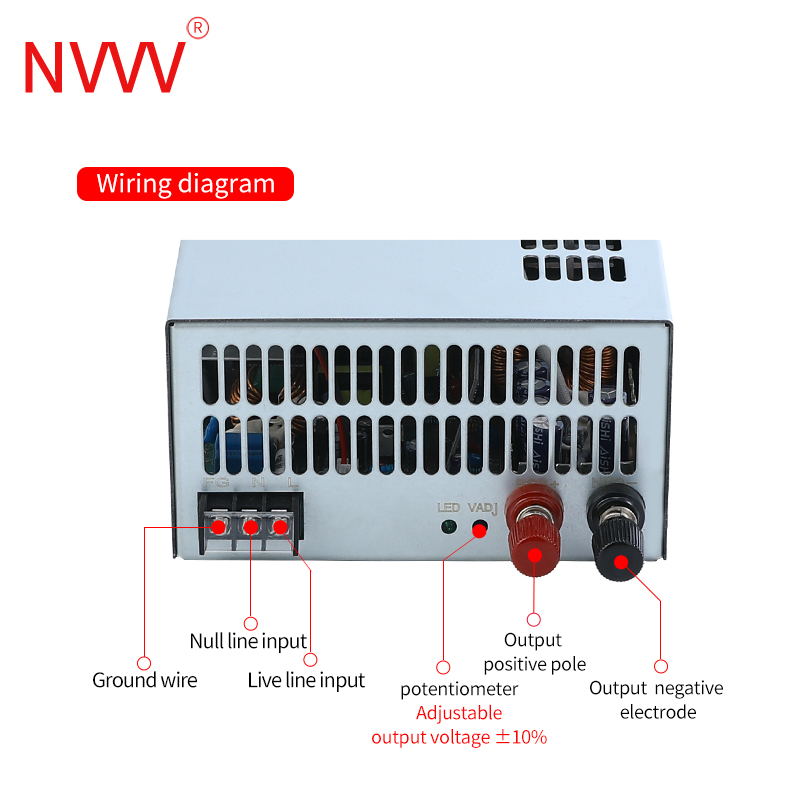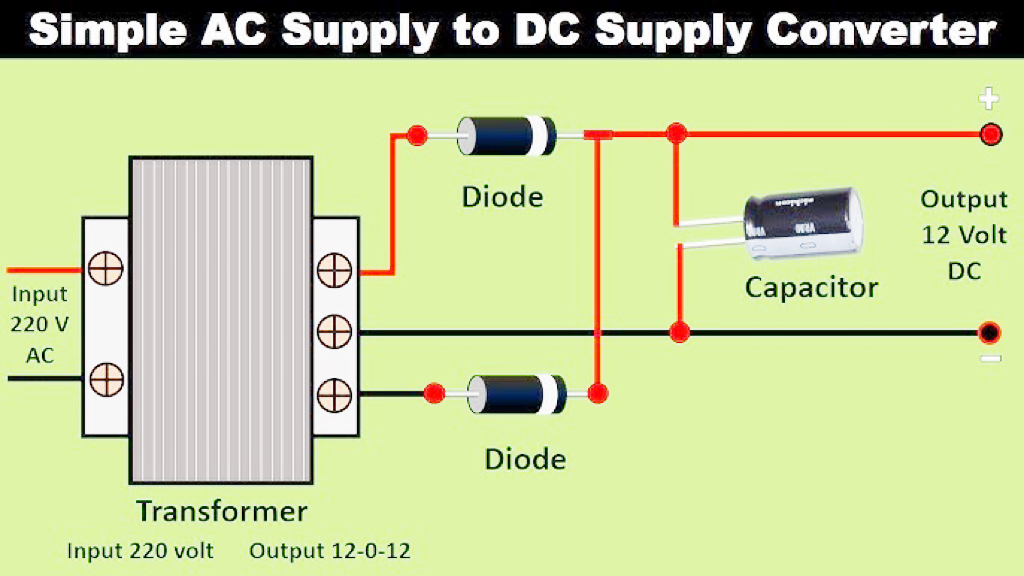What does SMPS stand for in industry?
Switched-Mode Power Supply (SMPS) has become an indispensable power supply technology in modern industry. It is not only used to provide efficient and stable power support for various industrial equipment, but also has been widely used in many fields due to its energy-saving, high efficiency and flexibility. With the increasing requirements for energy utilization efficiency and stability in the industrial field, SMPS has gradually become the core part of the industrial power system. This article will introduce in detail the role, principle, application scenarios and future development trend of SMPS in industry.
What is SMPS?
Definition of SMPS
Switched-mode power supply (SMPS) is a power supply device that performs voltage conversion and power regulation through high-frequency switching technology. Its main function is to convert the input alternating current (AC) or direct current (DC) into a stable output voltage of specific requirements, usually DC. The working principle of SMPS is to regulate the power flow of the input power supply by controlling the switching frequency, thereby providing the required output power to the load.
Working Principle of SMPS
The working principle of SMPS can be divided into several basic steps:
Rectification and filtering: First, the input AC power is converted into DC power through a rectification circuit, and the pulsating component in the voltage is removed by a filter.
Switch control: Next, a high-frequency switch (such as a transistor or MOSFET) is used to intermittently convert DC power into high-frequency AC power.
Transformer step-down: When the high-frequency AC power passes through the transformer, the voltage is adjusted according to demand.
Rectification and output: Finally, the high-frequency current is rectified and filtered again to obtain a stable DC output voltage.
SMPS achieves efficient power conversion through this series of steps and can adjust power output in real time according to load demand. Compared with traditional linear power supplies, SMPS has higher efficiency, smaller size and higher power density.
Application scenarios of SMPS in industry
SMPS is widely used in various fields of industry, covering a variety of scenarios from automation equipment, communication equipment to complex production lines. Here are some common application scenarios:
Industrial Automation
In the field of industrial automation, SMPS is used to provide a stable power supply for various devices, such as PLC (Programmable Logic Controller), sensors, servo motors, and key equipment in automated production lines. Since SMPS can automatically adjust the output power according to load changes, it is particularly suitable for scenarios that require stable voltage in industrial production environments.
For example, control systems in automated assembly lines often require low-voltage power supply, while actuators or large machinery require high-voltage power. SMPS can provide multiple voltage outputs and ensure that each device can get stable power support.
Communications and Data Centers
In the field of communications, servers, routers, switches and other equipment have extremely high requirements for power supply stability. SMPS can not only provide reliable power supply for these devices, but also has good voltage regulation capabilities, which can cope with power grid fluctuations and prevent equipment damage or data loss. In the data center environment, the high energy efficiency and low heat generation of SMPS are very important, which helps to reduce the operating costs of data centers and improve system stability.
Medical Equipment
SMPS is also widely used in the medical industry, especially in equipment that requires high precision, such as CT machines, electrocardiographs, MRI machines, etc. The normal operation of these devices depends on a stable power supply, and the output voltage stability and low voltage ripple characteristics of SMPS can ensure the precise operation of medical equipment and reduce the error rate. In addition, medical equipment often requires continuous operation, and the high efficiency of SMPS can significantly reduce the energy loss and heat generation of the power supply and extend the service life of the equipment.
Industrial control system
Industrial control systems, such as monitoring equipment, environmental monitoring equipment, and robotic arm controllers in automated factories, all require long-term stable operation, and switching mode power supply provides reliable power supply for these devices. Since the industrial environment is usually accompanied by complex electromagnetic interference, frequent load fluctuations and other factors, the fast response and voltage regulation capabilities of SMPS can ensure the normal operation of the control system and prevent unexpected shutdowns or failures of the production line.
Application of special equipment
In some industrial fields, such as school network laptop charging cabinets, 3D printers, embroidery machines, and agricultural irrigation systems, SMPS also plays a vital role. Here are a few specific examples:
School network laptop charging cabinet: The education field needs to provide fast and safe charging solutions for a large number of laptops. With its high efficiency and multiple output voltage support, SMPS can provide power to multiple devices at the same time without damaging the equipment due to excessive current or voltage fluctuations.

3D printers: 3D printers require stable and precise power input to ensure that there are no voltage fluctuations or power interruptions during the printing process. The efficient conversion and stable output characteristics of SMPS make it an ideal power solution for 3D printers.
Embroidery machine: Industrial embroidery machines require continuous and stable power support during operation. SMPS can not only provide the required power, but also reduce the impact of voltage fluctuations on equipment performance, ensuring the smooth progress of the embroidery process.
Watering machine: In the agricultural field, watering machines need to rely on stable power supply for continuous operation, especially in areas far away from the power grid. SMPS can convert solar energy or other power sources into electricity suitable for watering machines to ensure its reliable operation.
3. What are the advantages of SMPS?
Compared with traditional linear power supplies, switching power supply has obvious advantages in many aspects. The following are the main advantages of SMPS in industrial applications:
Higher energy efficiency
One of the biggest advantages of SMPS is its high energy efficiency. Because SMPS uses switch mode control, it does not waste a lot of energy by adjusting the voltage like linear power supplies. Generally speaking, the efficiency of SMPS can reach 85% to 95%, while the efficiency of linear power supplies is usually only 50% to 70%. In industrial environments that need to run for a long time, the use of efficient SMPS can significantly reduce power consumption and save operating costs.
Small size and light weight
The high-frequency operation of SMPS allows its internal components to be made smaller, such as transformers, filter capacitors, etc. Therefore, SMPS is smaller in size and lighter in weight, which is particularly suitable for industrial equipment with limited space or portability. Small SMPS is easy to embed and integrate in industrial equipment, reducing the footprint of the power system.
Stable output and strong regulation capability
SMPS can quickly adjust the output voltage according to load changes to ensure that the equipment can still obtain stable power supply under different load conditions. This is especially important in industrial scenarios where the grid voltage is unstable or the load fluctuates greatly. By quickly adjusting the output, SMPS effectively reduces the risk of equipment failure caused by unstable power supply.
Multiple protection functions
Modern SMPS are generally equipped with multiple protection functions such as overvoltage, overcurrent, and short circuit protection to ensure the safety of the equipment. These functions can not only prevent equipment from being damaged by power problems, but also extend the service life of equipment and power supply, and reduce maintenance and replacement costs.
Development trend of SMPS in future industry
With the development of industrial technology, the future application prospects of SMPS are broader. The following are several major development trends of SMPS in the industrial field in the future:
High frequency and higher energy efficiency
Future SMPS will gradually develop towards higher frequency and higher energy efficiency. With the advancement of electronic component manufacturing technology, future SMPS will be able to achieve higher switching frequency, thereby further reducing energy loss in the power supply and improving overall efficiency. At the same time, higher frequency SMPS also means further reduction in size, adapting to the needs of more precision and micro devices.
Intelligence and digital control
Intelligence is an important direction for the future development of industry, and SMPS is no exception. By introducing intelligent control technology, future SMPS will be able to remotely monitor, automatically adjust output parameters, and detect power status in real time, and warn of possible failures in advance. For example, the power management system in the factory can monitor the power consumption of each device in real time through the intelligent SMPS, optimize the overall energy consumption, and reduce unnecessary power waste.
More environmentally friendly and more durable
With the improvement of environmental protection requirements, SMPS will also develop in a more environmentally friendly direction. The future SMPS will pay more attention to environmental protection in terms of manufacturing materials, energy consumption, recycling, etc. At the same time, SMPS will be more durable and can operate stably in harsher industrial environments, reduce the frequency of equipment replacement, and reduce the total cost of ownership.
Conclusion
Switch mode power supply (SMPS) is one of the core technologies for power conversion and supply in the industrial field. With its high efficiency and energy saving, stable output, compact design and multiple protection functions, it has been widely used in automation, communication, medical, control systems and other fields. With the continuous advancement of industrial automation and intelligence, the technology of SMPS is also constantly innovating and developing. In the future, SMPS will continue to improve its performance in terms of high frequency, intelligence, environmental protection, etc., and provide more efficient power solutions for the industrial field.
By deeply understanding the working principle, application scenarios and development trends of SMPS, enterprises can better utilize this technology, optimize their production systems, improve energy utilization efficiency, and lay a solid foundation for future industrial development.










